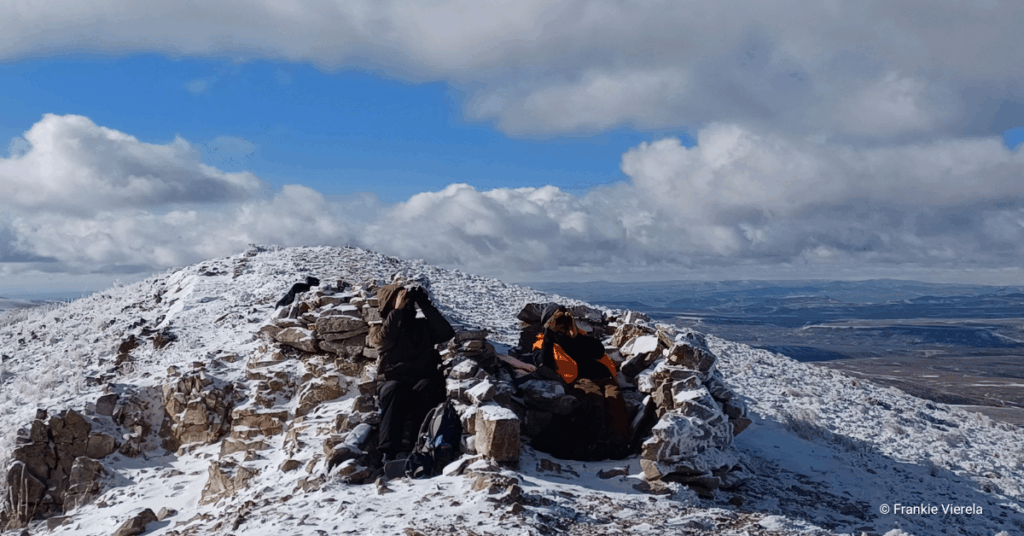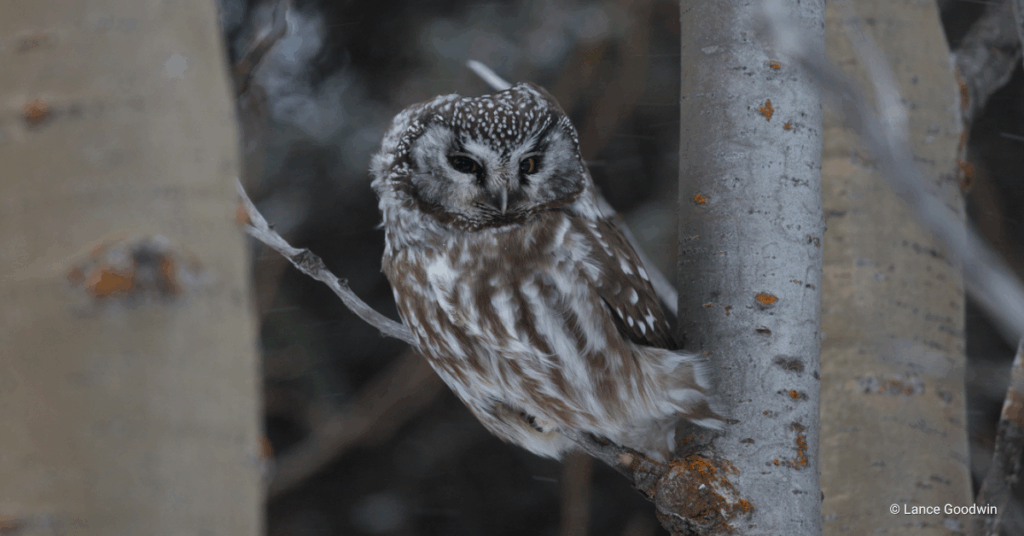There’s a reason that people often use the expression “watch something like a hawk.” Birds of prey come designed to see you, so to see these elusive species, special tools are required. As mostly solitary predators, these birds take up large territories to hunt, which only allows for a certain amount of raptors per area. Additionally, raptors fly high up in the sky and nest in hard-to-access places—-like treetops or cliffsides. If you are trying to study a nocturnal raptor, you have the additional barrier of it being, well, dark out. Bearing all of that in mind, monitoring raptors comes with a slew of challenges.
Optics, such as binoculars and spotting scopes, are a must in any ornithologist’s kit. When watching raptors migrate in the fall or spring, or trying to find an eagle’s nest in the cracks of a cliffside, our scientists need that extra magnification. With optics, we can see silhouette shape, flight behavior, and sometimes even plumage—which are all important components in getting a good ID.
What optics lack, however, is the ability to record what you see. Using cameras, whether that be a smartphone or an expensive DSLR, allow us to capture essential information about specific individuals. In recent years, we have begun photographing the plumage of nearly every raptor we band at our migration sites. We also rely heavily on trail cameras to capture bird behavior without the presence of people. This is incredibly helpful in getting more accurate behavioral information and saves us a lot of staff time.
Keep reading for an in-depth look into the cameras and optics in our scientists’ field kits.

I Spotting Scope: Although more cumbersome and expensive than binoculars, scopes have greater magnification to spot raptors further away. We use these regularly to spot Golden Eagle nests on high cliffsides or read American Kestrel color bands.
J Binoculars: These optics are a must for our science staff, especially our migration crew. Binoculars are easy to transport and are less straining on the eyes than spotting scopes.
K Action Camera: Small cameras are typically used for studying raptors who nest in cavities, like American Kestrel and owls. We use these small devices attached to long poles to peer into nestboxes with minimal disturbance.L Trail Camera: These devices are only tripped off when there is movement, or can be set to go off at specific time intervals. This preserves the battery and allows them to be left in the field for long periods of time unmanned. This also allows us to capture bird behavior without a human presence. Trail cameras are used heavily for our Eagle Vehicle Strike Project and Golden Eagle nestling monitoring.
This blog was written by Sammy Riccio, HWI’s Communications Manager. You can learn more about Sammy here.



